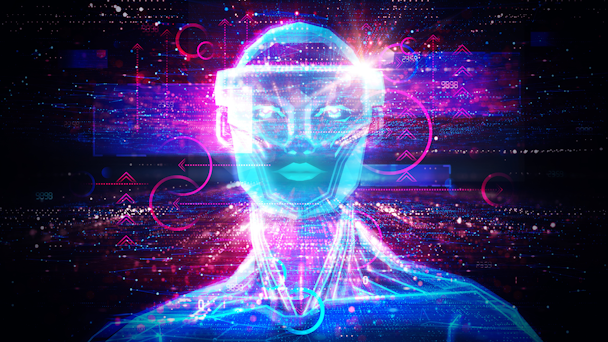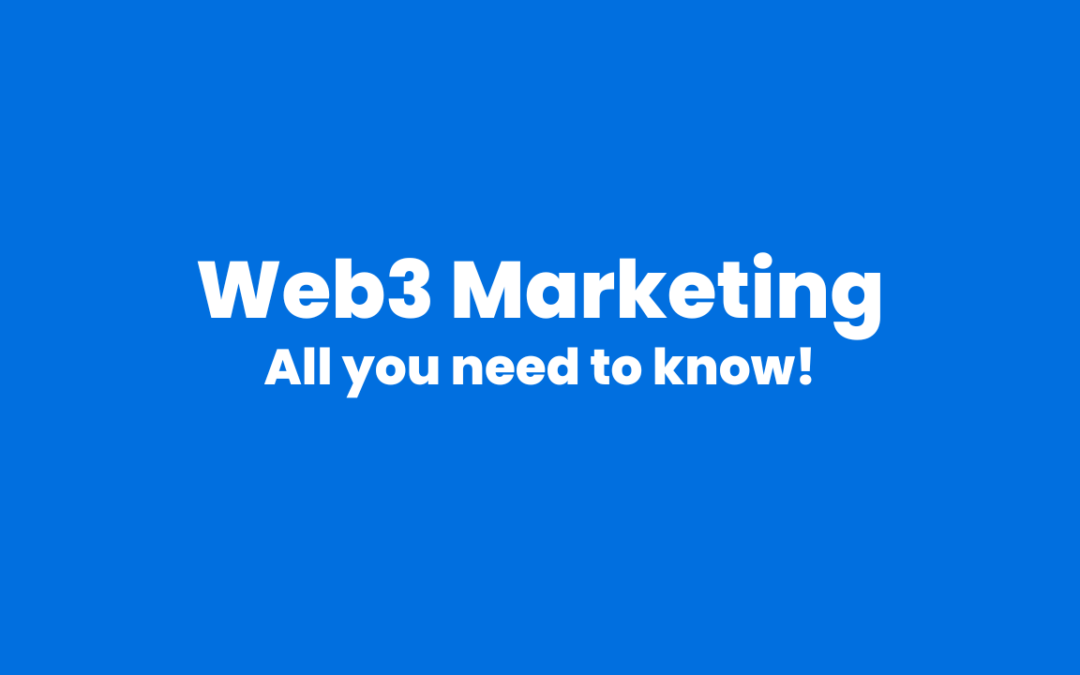
Web3 is the next stage in the evolution of the internet, and it’s gaining the attention of some of the tech industry’s biggest players. Instagram and Spotify are just a few of the Web2 companies that put their eggs in the basket of the new web, and they’re not the only ones.
So what is Web3 in the first place? Put simply, it’s a more decentralized, user-focused web. Rather than being reliant on centralized platforms like Google or Facebook, users are in control of their own data and exchange value directly with one another.
This shift has major implications for marketing, and those who don’t adapt will be left behind. Gone are the days of one-way communication; user-generated content is key in Web3 marketing.
And since data is now a valuable commodity, businesses need to focus on collecting quality data that can be used to improve customer experience.
If you’re looking to stay ahead of the curve, our web3 marketing guide can help you get started! With everything from tips on content creation to advice on data collection, you’ll be ready to make the switch to Web3 with confidence.
So read ahead and learn all there is to know about web3 marketing!
What is Web 3.0?

The new age of the Internet, known as Web 3.0, is just around the corner. This new generation of the Internet is set to change the way we communicate and consume information online. So, what exactly is Web 3.0?
Web 3.0 involves semantic web technology, which helps computers to understand the meaning of data on the web. This is a major departure from Web 2.0 sites, which are focused on user-generated and UX.
With Web 3.0, businesses will be able to create more personalized and targeted ads, and content for their customers.
Social media sites such as Facebook will become even more important in the age of Web 3.0.
These sites will help businesses to connect with their customers and build relationships with them. Additionally, social media sites will be used to collect data about customer preferences and behavior. This data will be used to create better customer experiences on websites and mobile apps.
History of Web 3.0
The history of the internet can be divided into three distinct generations or “web phases.”
Web 1.0 was active from 1994 to roughly 2000. Static website pages typified the initial years of the WWW throughout this first wave of the internet (World Wide Web).
Web 2.0 started to take shape in 2000. The way we interact and consume information has been completely transformed by this new internet era.
The development of social media networks or social media platforms that integrate user-generated content (UGC) such as YouTube, Facebook, and Twitter all fall into this category.
With the introduction of Bitcoin, blockchain technology was developed in 2009. Third-generation internet services, or web 3.0, were created as a result of this technology disruption.
The main goal of Web 3.0 is to create a Semantic Web that is data-driven and employs machine learning to comprehend data. Making websites that are smarter, connected, and transparent is web 3.0’s ultimate goal.
Blockchain technology has made user data safer than ever before, and the internet is putting more of a focus on accountability and transparency.
Web 3.0; the era of secured data privacy

The data crisis has reached a fever pitch. With data theft, data breaches, and user data manipulation making headlines on a regular basis, it’s no wonder that people are losing trust in the way businesses collect and use their data.
The good news is that there’s a solution to this problem: data transparency. By being open and transparent about the way they collect, use, and protect data, businesses can help restore trust and build strong relationships with their customers. In addition, data transparency can help businesses create new opportunities for value creation.
For example, by sharing data with other businesses, they can create new products and services that make use of that data. By giving users control over their data, they can also create new forms of exchange value. Ultimately, the Web 3.0 era guarantees data transparency on how businesses operate.
Web 3.0 Marketing

Web 3.0 is the next iteration of the internet, and it’s defined by user-centric applications and seamless interfaces. So what does that mean for marketing?
In short, it means communication channels will be more intimate, and social media marketing will take on a new form.
The increased focus on user experience means businesses will have to invest in creating seamless interfaces that make it easy for customers to find what they’re looking for and make a purchase.
Some experts believe that Web 3.0 will pave the way for a new era of marketing where companies focus on building relationships with customers rather than simply selling them products or services.
Whatever the future holds, one thing is certain: businesses that don’t embrace Web 3.0 will be left behind.
But how does it work?
The decentralized web, or Web3, is the next phase of the internet’s evolution. It’s a more user-centric version of the internet, where data isn’t controlled by a few major corporations.
Instead, it’s decentralized and distributed, so anyone can access it. And because it’s decentralized, it’s more secure.
Web3 marketing is changing how people perceive the internet and Search Engine Optimization (SEO). By offering interactive advertising opportunities, it improves the user experience. It presents a fantastic chance for marketers to develop a Web 3 marketing plan that is more effective and to target consumers with more precise advertisements.
For example, with decentralized web advertising, you could target ads to people based on their interests, rather than just their demographics. So if you’re selling hiking gear, you could target ads to people who have recently searched for hiking trails near their location.
With the decentralized web, we have an opportunity to build a more user-friendly and secure internet, and a chance to build a more effective and targeted form of marketing.
Does it cover the retail eCommerce business?

Web 3.0 is the next stage of internet development, and it promises to bring a number of changes to the way we use the internet. One area that is likely to be affected is retail e-commerce.
Currently, retail e-commerce businesses rely on centralized platforms to sell their products and services.
However, with Web 3.0, things will start to move towards a more decentralized model. This means that businesses will be able to sell their products and services without relying on a centralized platform. Instead, they will be able to use decentralized apps (dApps) built on a new generation of internet and web protocol. This will provide a number of benefits for businesses, including increased security and lower transaction costs.
In addition, Web 3.0 will also enable businesses to create virtual reality online stores, which will give customers a completely immersive shopping experience.
Consequently, it’s safe to say that Web 3.0 will have a significant impact on retail eCommerce businesses in the years to come.
Key features of web 3 marketing
Web 3.0 is being powered by blockchain technology and internet users are becoming more involved in the development of the internet. So aside from decentralization, there are other key features that house the vertical of Web 3.0 marketing:
Artificial Intelligence (AI)

With AI, web 3.0 will be able to offer more personalized experiences to internet users. NLP technology will enable computers to understand human language better so that they can provide relevant and accurate responses.
Ubiquitous web
The ubiquitous web will make sure that everyone has access to the internet, on all devices, and through all applications. The internet of things (IoT) is responsible for connecting more devices to the internet every day and it is one of the key components of the omnipresent web.
Semantic Web (SW)
The semantic web (SW) will use metadata to describe the content on the internet in a machine-readable format. This will make it easier for computers to search for and find relevant information.
Ultimately, these features will make web 3.0 marketing more effective and efficient. Marketers will be able to target consumers more accurately and deliver more relevant ads.
How can you prepare your for brand Web 3.0 Marketing?
Nothing that we said so far matters if you’re not preparing for web 3.0 marketing. This marketing revolution is certainly coming. Facebook rebranding into Metaverse is one of the clearest signs that we are in the early days of a new era of marketing, where companies will be advertising in virtual reality (VR) and more.
How can your business be affected by the Web 3.0 vertical?
- Blockchain technology would be used to create trustless systems where data is transparent and open to all. As a result, businesses would have to be highly user-centric and decentralized in order to succeed.
- Virtual reality stores and decentralized apps would also become popular.
In order to prepare for this, business owners need to start adapting blockchain technologies and begin thinking about how they can make their businesses more user-centric.
Here’s how you can get started with your brand’s Web 3.0 marketing strategy:
Learn how to keep up with Web 3.0 trends
With the web protocol evolving and data security becoming more important, firms must now reevaluate their marketing strategies to reflect the changes of Web 3.0.
Many aspects of web design and user experience have been updated and improved, but in order to stay ahead of the curve, businesses need to be proactive in acquiring the resources necessary to maintain a competitive edge.
One way to do this is by creating 3D models or virtual reality stores, which can be extremely beneficial for retail eCommerce businesses. Not only will this allow users to better visualize products, but it will also create a more immersive and realistic experience that can help increase conversion rates.
In addition, with the rise of Augmented Reality (AR), businesses have an opportunity to provide even more value to their customers by overlaying digital information in the real world.
By staying up-to-date with the latest web trends and technologies, businesses can ensure that they are providing the best possible experience for their customers.
Create Contents – Including NFTs

That’s right, non-fungible tokens are already becoming a big part of the rapidly growing technology and digital marketing landscape, so you need to make sure your brand is on board. There is already a sizable community for NFTs (like CryptoPunks), so don’t pass up the opportunity to promote your business there.
Reward Users
Another important aspect of Web 3.0 marketing is to reward users and loyal customers. With this new technology, businesses have the opportunity to reward their customers with digital assets that have real value. This is a great way to build loyalty and keep your customers coming back for more.
You can do this by offering discounts or coupons that can be redeemed for NFTs. You can also create loyalty programs that allow customers to accumulate points that can be used to purchase NFTs.
Increase your Web3 professional network
Success in Web3 can depend on having a robust network, much like in many other businesses. Consider becoming a member of a networking group like CEC to meet other Web3 industry professionals.
Join conferences
Events and conferences related to the cryptocurrency industry are excellent for networking.
Through discussions with some of the top experts in the field and knowledge of what rival companies are doing, this will assist businesses in understanding how Web3 functions.
The Web3 industry, which is still in its infancy, is searching for projects that are scalable, efficient, have a high level of privacy, and are inexpensive.
Arm your social media with Web3
Social media giants like Facebook, YouTube, and TikTok are among today’s household name that change the way we interact and connect with one another.
As much as they able to transform how people communicate online and added new features to enhance user experience, they have also come under fire for allegedly violating users’ privacy.
Through the collection of user data and the distribution of that data to data brokers for more precise ad targeting, apps like Facebook, TikTok, and numerous others have thrived. However, since it became known that businesses had been inappropriately collecting their users’ data without their agreement, media publishers, app developers, and online stores now need to find alternative means of surviving.
Decentralized apps (dApps) are dismantling this model in Web3 by doing away with the centralized authority, developing deep connections with users, and forging cooperative relationships.
Furthermore, memes are currently in charge on social media. A meme is a thought with symbolic significance that illustrates a certain theme. It is a quick and efficient technique to disperse Web3’s complexity online.
As we mentioned before, this new model of the internet is still in its early stages, so expect more changes and updates in the future. Nevertheless, by understanding these Web3 marketing trends, you’ll be able to stay ahead of the curve and give your business the best chance to succeed in this new era.
Conclusion
Marketing has changed a lot in the last decade. With the rise of new technologies, there are always new trends to keep up with.
In the past, we’ve seen the rise of social media marketing and influencer marketing, and now we’re seeing the rise of Web3 marketing.
What’s important is that you stay up to date with these new trends and find ways to incorporate them into your marketing strategy.
If you can do that, you’ll be well on your way to success in the world of Web3.0.
At Boba Digital, we understand the importance of keeping up with the latest trends and technologies. Contact us today to learn more about how we can help you stay ahead of the curve.

